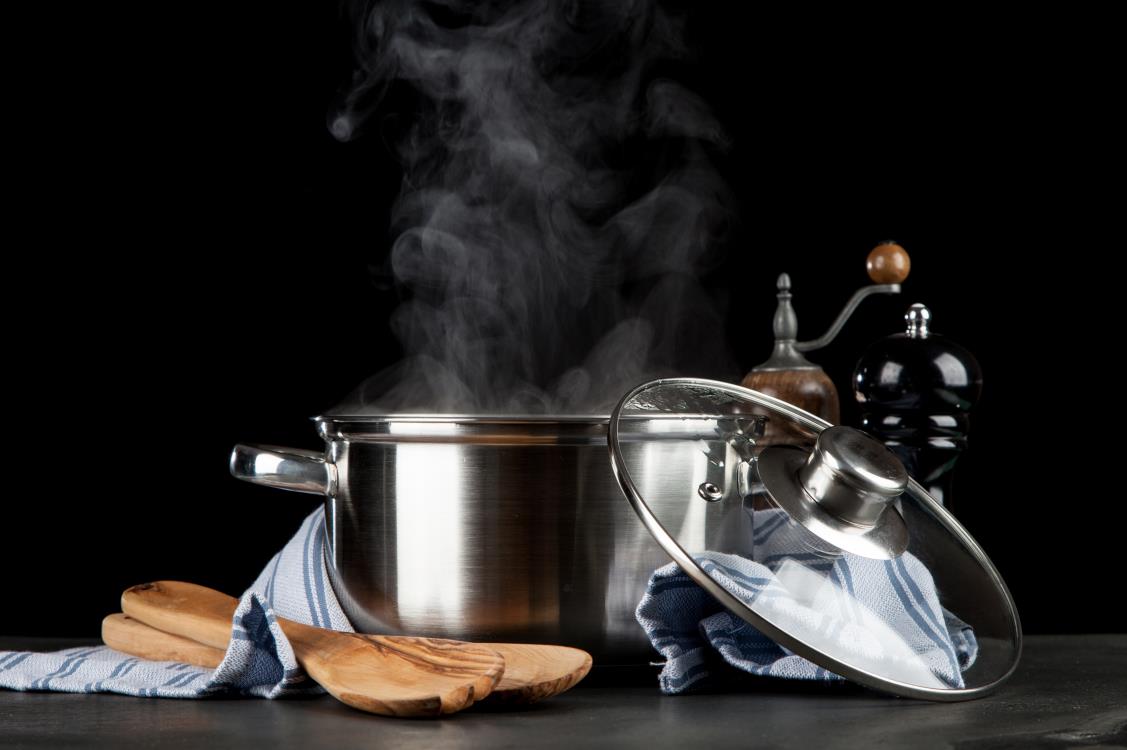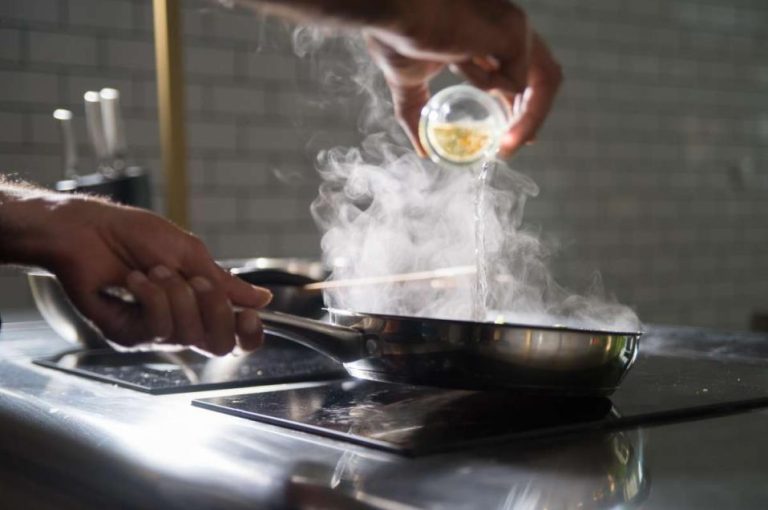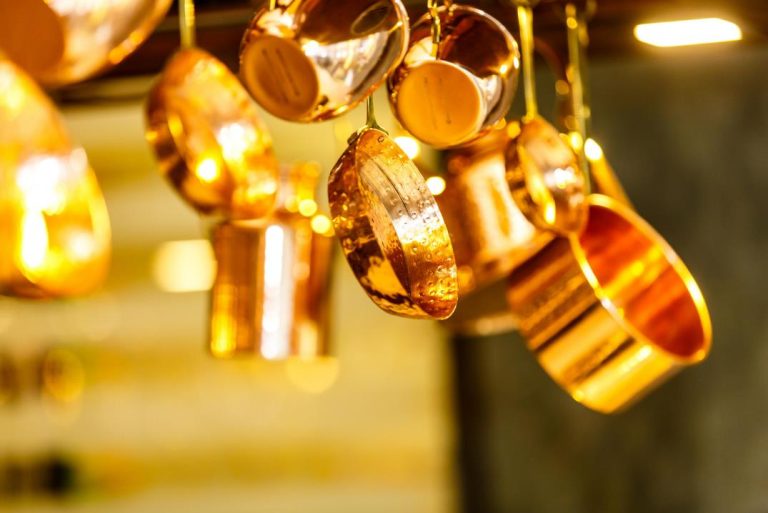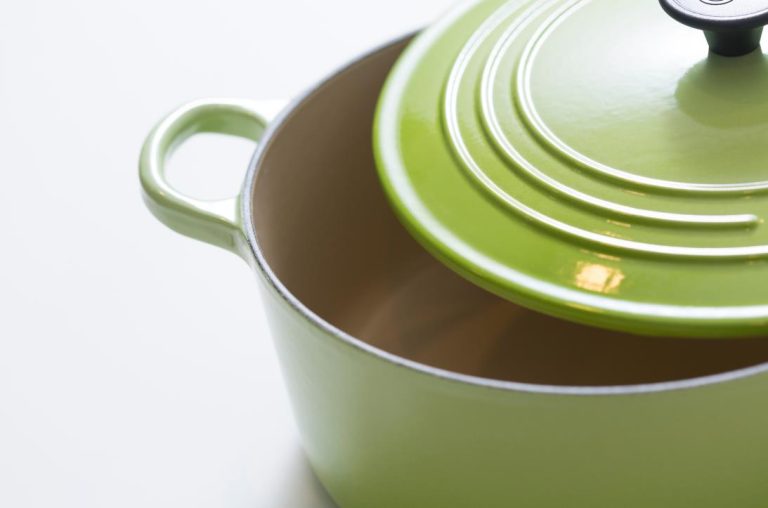Enameled cast iron and stainless steel produce distinct cookware products with varying performances. The differences between enameled cast iron and stainless steel are vast. In some aspects, they are complete opposites that provide different cooking experiences.
Enameled cast iron brings plain cast iron’s renowned heat retention in a more convenient package. It doesn’t need seasoning with its vitreous coating that’s somewhat non-stick. Stainless steel, on the other hand, has a non-reactive cooking surface that can be non-stick with the right technique.
Both enameled cast iron and stainless steel are popular cookware materials that excel at cooking foods in various ways. In this article, we’ll see how they compare. Continue reading to find out which one suits your store the best.
How is enameled cast iron different from bare cast iron?
The primary difference between cast iron and enameled cast iron is the coating. The foundation is the same – cast iron. With cast iron cookware, the surface needs seasoning before cooking. It’s a simple yet effective process that creates a natural non-stick layer.
Enameled cast iron has a vitreous coating that functions as a seasoned cooking surface. Enameled cast iron is an upgrade to cast iron skillets that need a seasoned surface. The enamel coat works similarly to non-stick materials. It doesn’t need seasoning but requires careful handling to prevent chipping.
Highlights of enameled cast iron cookware
- A partially non-stick surface that doesn’t need seasoning.
- Non-reactive cooking surface – perfect for cooking acidic foods.
- Amazing heat retention.
- Aesthetic appeal with various colors
- Can be used in the oven – ideal for baking homemade bread.
Buy Wholesale Cookware and Start Scaling up with Us Today
Contact us and connect with a sales rep to get a free quote.
An overview of stainless steel cookware
While there is 100% stainless steel cookware, some have layers – usually three. Also known as tri-ply stainless steel cookware, these products have stainless steel bases and cooking surfaces with an aluminum or copper core.
The aluminum and copper are there to improve the conductivity for improving heat distribution further. Some brands take this a step up by incorporating five layers.
Regardless, the properties of stainless steel cookware are pretty much the same. The below comparison applies to all types of stainless steel cookware in the market.
Highlights of stainless steel cookware
- Non-reactive cooking surface.
- Easy to clean and maintain.
- Outstanding heat conductivity and distribution.
- Resistant to scratch and corrosion.
- Can be used in the oven and broilers.
Enameled cast iron vs. stainless steel cookware

The cookware industry is more and more diverse over the years, with all kinds of materials utilized for making products with distinct pros & cons. Finding the perfect products for individual customers takes careful consideration of different aspects of cookware materials.
Here is how enameled cast iron and stainless steel compare in cooking performance, durability, maintenance, and more.
Heat conductivity
Stainless steel is an excellent conductor of heat. This conductivity allows cooks to adjust the heat according to the situation instantaneously. If the cookware gets too hot, for example, lowering the heat will cool off the surface temperature quickly. This responsiveness also comes with even heat distribution that maintains consistent temperatures.
These make stainless steel cookware adaptable to various cooking styles like frying and sauteing.
The same doesn’t apply to enameled cast iron cookware. Whether it is an enameled cast iron Dutch oven or a pan, it will take time to heat. Additionally, this type of cookware shouldn’t be heated empty. Some oil or water should cover the surface while it gets hot. Otherwise, enamel coating loses its durability – or worse, crack or warp.
While enameled cast iron isn’t as good as stainless steel at conducting heat, it distributes heat evenly across its surface. It allows even cooking, just like stainless steel, though it needs more time to distribute heat.
Heat retention
The chemical properties and the typical thickness gives enameled cast iron and stainless steel cookware different heat retention abilities.
Cast iron’s well-known heat retention abilities carry to enameled cast iron. After all, enameled cast iron is the cast iron we all know, but with an enamel coating.
Despite taking much longer than stainless steel to transfer heat, enameled cast iron holds onto it. Excelling at heat retention makes the enameled cast iron a perfect cookware choice for simmering, braising, and stewing.
At the same time, the ability to retain heat makes enameled cast iron ideal for searing. However, the porcelain enamel coating similar to ceramic doesn’t do well with high heat as a seasoned cast iron skillet. Still, cooks can get away with occasionally searing steak using an enameled cast iron pan.
Stainless steel cookware is quite the opposite. It distributes and absorbs heat exceptionally well but isn’t good at holding onto it. Nonetheless, stainless steel’s responsive nature makes up for it. Stainless steel pots and pans are ideal for various cooking techniques. They can handle stir-frying, boiling, browning, simmering, and many other cooking methods.
Durability

Enameled cast iron and stainless steel are durable materials that produce long-lasting cookware. However, as with other cookware materials, they have strengths and weaknesses.
As mentioned, enameled cast iron’s vitreous coating is quite fragile. Paired with the brittleness of cast iron, it doesn’t make a good duo for durability. If dropped or impacted heavily, enameled cast iron can get damaged. Even a tiny chip will expose the raw iron beneath the enamel which is difficult to repair.
Enameled cast iron resists high heat and is corrosion-resistant but can’t withstand rapid temperature fluctuations. If mishandled or submerged in a bath of cold water after high heat, the durability will reduce greatly. For enameled cast iron pots and pans to last years, they will need careful handling.
Across all these, stainless steel holds up better to impact, scratch, and corrosion. It’s more forgiving to mishandling and incorrect use than enameled cast iron. Stainless steel maintains its integrity better than enameled cast iron under vigorous use.
Maintenance
Enameled cast iron cookware is prized for its minimal maintenance needs. Any cook moving from bare cast iron to enameled cast iron will find it incredibly convenient. However, enameled cast iron isn’t that maintenance-free compared to stainless steel.
Cooks need to be careful with cleaning and storing enameled cast iron cookware.
Enameled cast iron must be hand washed as the coating can chip at the slightest wrong move. Dishwashers aren’t a good place for enameled cast iron, though they won’t cause rust or fade the surface.
The fragile coating also requires silicone and wooden utensils for stirring foods. Lastly, enameled cast iron cookware shouldn’t be stacked atop. Individual pieces should be stored separately to prevent chipping. This may also require customers to have a bigger storage space, especially for sets.
On the other hand, stainless steel cookware is just as effortless to maintain as stainless steel kitchen knives. Many are dishwasher safe, though some tri-ply stainless steel cookware isn’t.
Metal utensils won’t inherently damage stainless steel cookware, but they will scratch the pristine surface. So the use of silicone and wooden utensils are also recommended. Lastly, stainless steel pots and pans can be stacked atop, requiring less storage space.
Price
Both enameled cast iron and stainless steel cookware vary in price. The quality of the materials, manufacturing processes, size, and branding all play a role. Nonetheless, these, along with labor and shipping costs, are higher with enameled cast iron than stainless steel.
Generally, a standard stainless steel pot costs about $40 to $80. In comparison, an enameled cast iron Dutch oven costs between $80 and $120. For the products of reputable brands like Le Creuset, the price increases to upwards of $200.
The same applies to stainless steel from reputable brands, but not to the same degree. Shoppers can get high-quality stainless steel cookware for the same price as an average enameled cast iron pot or pan.
The variety in pricing makes stainless steel cookware appealing to a broad range of shoppers with different budgets.
Customization options
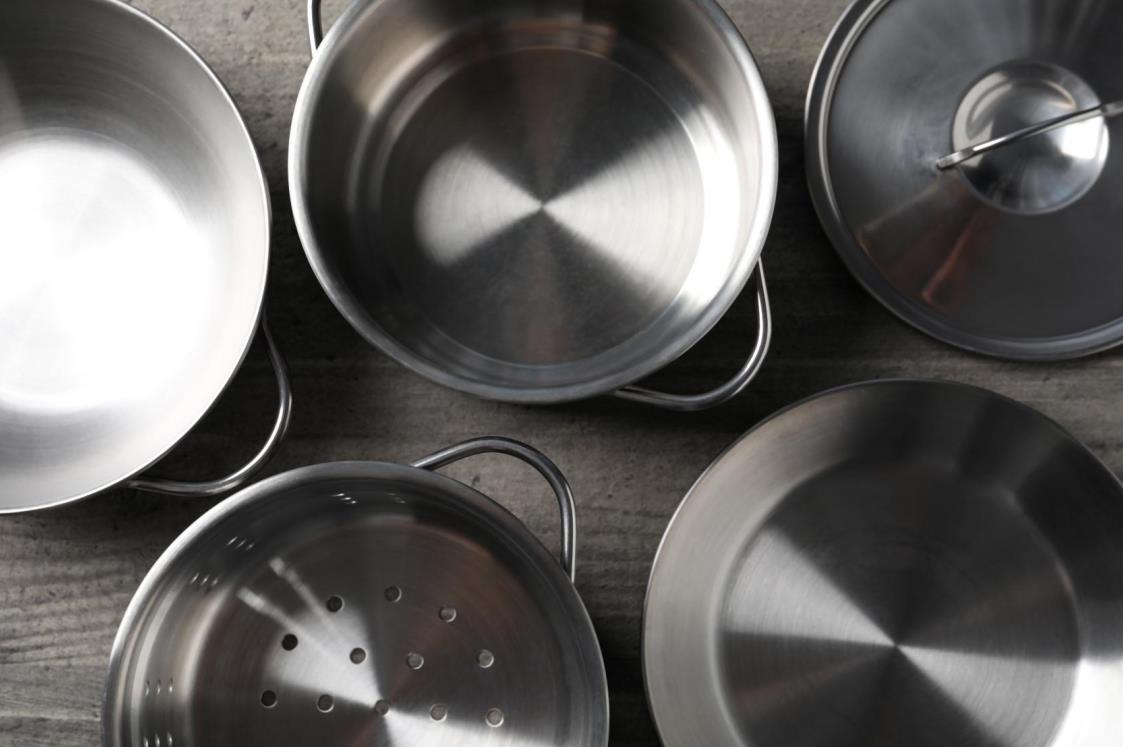
If you want an OEM cookware manufacturer to create products based on your specifications, you will have more options with stainless steel.
Enameled cast iron isn’t as good at adapting different types of products. Manufacturers can’t create the same molds they can do for stainless steel.
This can be a major consideration for those that want to appeal to customers looking for something specific. Yet, enameled cast iron cookware comes with a rainbow of colors. The variety of enameled cast iron color options is unlike any other.
Comparison table
| Heat conductivity | Heat retention | Heat distribution | Maintenance | Durability | Price | |
| Enameled cast iron | Poor | Excellent | Fair | Moderate | High | Expensive |
| Stainless steel | Excellent | Poor | Excellent | Low-maintenance | High | Moderate |
Buy Wholesale Cookware and Start Scaling up with Us Today
Contact us and connect with a sales rep to get a free quote.
Stainless steel vs. enameled cast iron: Which one to sell?
So, enameled cast iron or stainless steel cookware? The answer largely depends on the cooking techniques utilized by your customers.
Enameled cast iron is better at slow cooking, as summarized in this article. It can cook foods evenly while braising, stewing, or simmering. The heat retention capabilities of enameled cast iron are also ideal for cooking in an oven.
Stainless steel excels more at high-temperature cooking, such as searing and browning. While enameled cast iron can also tackle these, surface staining is a big issue that requires extensive cleaning. Searing, browning, deglazing, stir-frying, and boiling are better with stainless steel cookware.
The adaptability from low to high temperatures gives stainless steel pots and pans a place in professional kitchens. While home cooks can also benefit from what stainless steel provides, they are more complete with both in their collections. A stainless steel pan to quickly fry and brown foods; and an enameled cast iron Dutch oven for soups and stews.
Source cookware from LeeKnives
LeeKnives can assist you in sourcing products from reputable cookware manufacturers in China. We offer various sourcing solutions to help small businesses scale. Whether you’re selling at a brick-and-mortar store or dropshipping, we’ve got you covered. Get in touch with us to request a free quote today!
